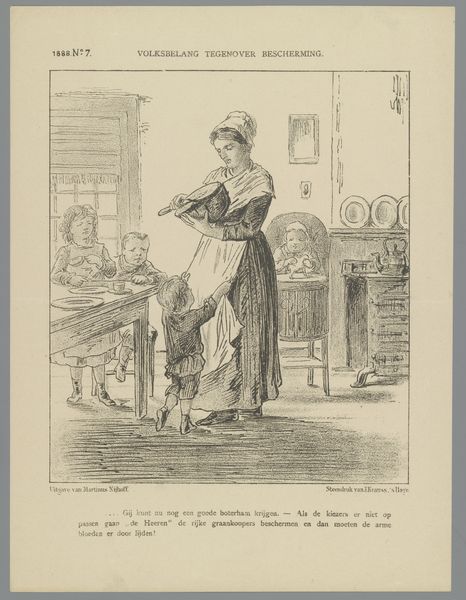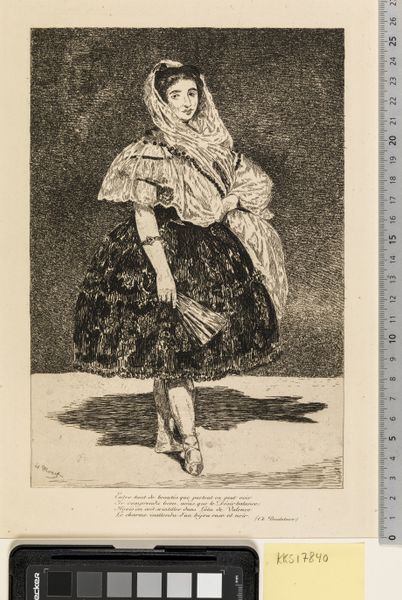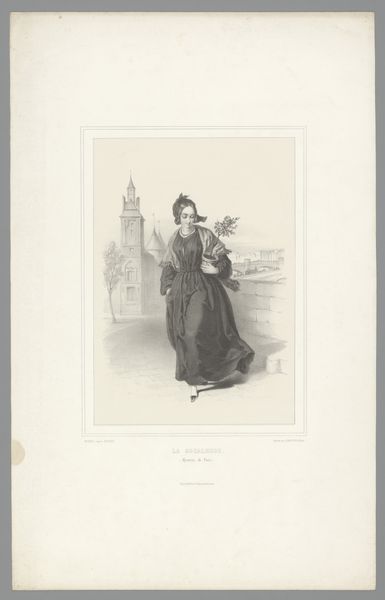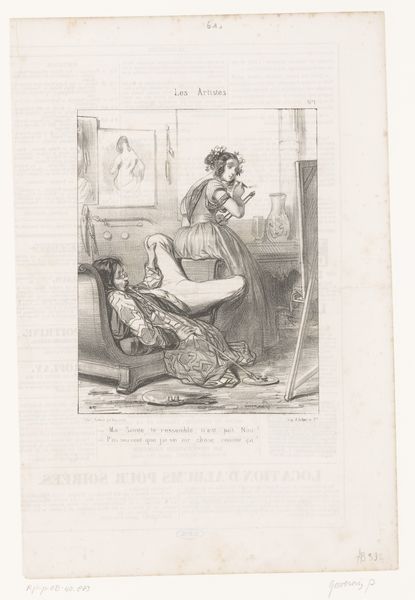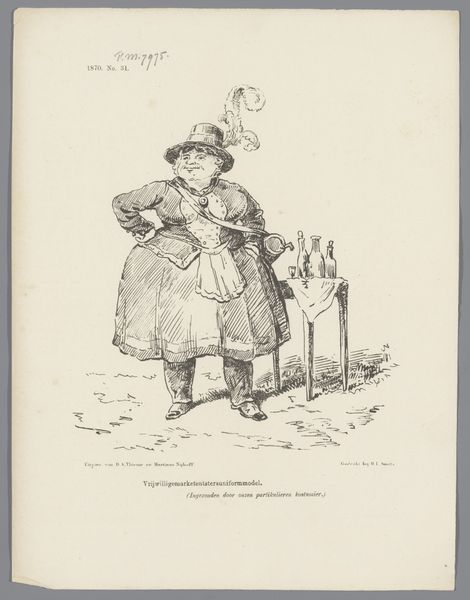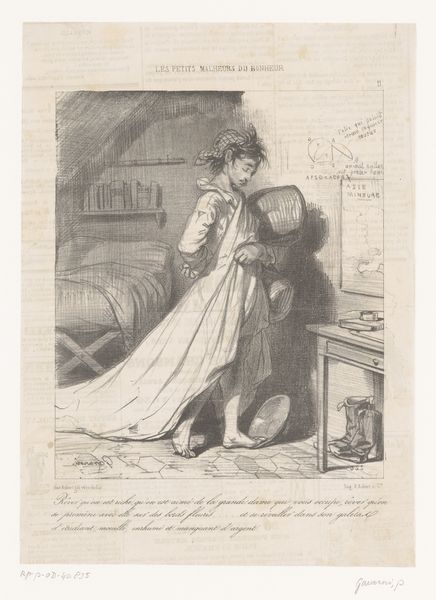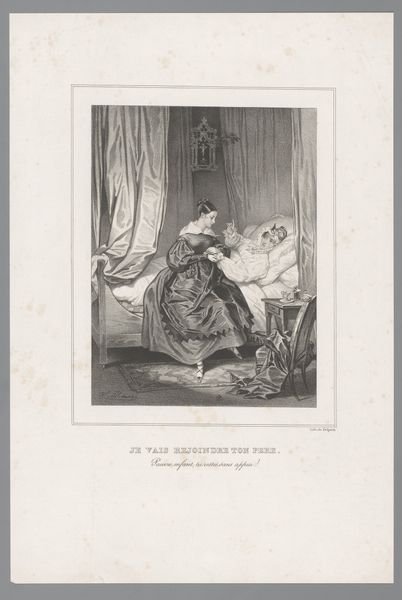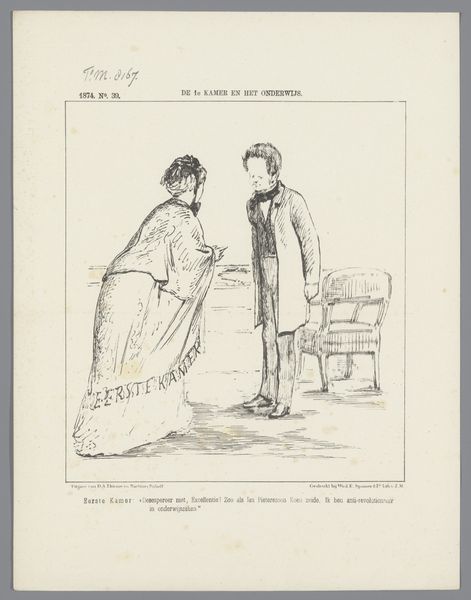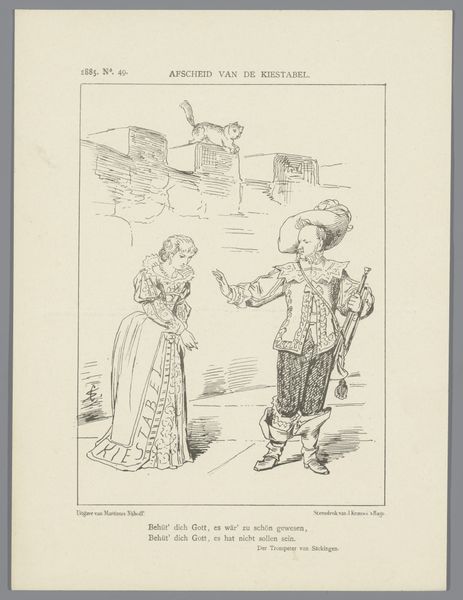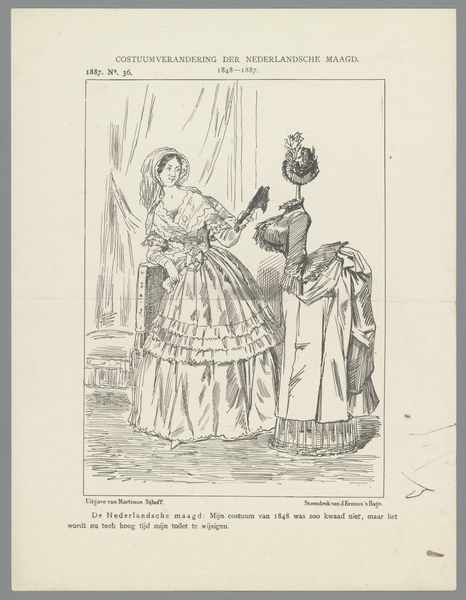
Politieke spotprent over de noodzaak tot herziening van de grondwet, 1883 1883
0:00
0:00
drawing, lithograph, print
#
drawing
#
narrative-art
#
lithograph
# print
#
caricature
#
history-painting
Dimensions: height 275 mm, width 215 mm
Copyright: Rijks Museum: Open Domain
Curator: Here we have "Politieke spotprent over de noodzaak tot herziening van de grondwet, 1883," or a political cartoon addressing the need to revise the constitution, created in 1883 by Johan Michaël Schmidt Crans. It's a lithograph print. My first thought is it looks burdened, almost sagging under its own weight. Editor: Yes, the artist uses line work masterfully here; it creates a sense of tangible weight to the constitution she's depicting, especially with the phrases clinging to her figure. Consider how the lithographic process itself allowed for the relatively quick reproduction of such politically charged imagery. What laws were being negotiated and what segments of the populace supported them? Curator: Right, the woman is literally weighed down by bags labeled with phrases like "Staande leger," "Schulw Kerk Staat," "Algeme Waterstaat wet"—the standing army, school and the church-state divide, and the general water management law, all pressing concerns of the time. Notice the phrase "Grondwet van 1848" along the hem of her skirt: these different problems all are laid out upon this image of the nation's core political tenets. Editor: The Constitution of 1848 is rendered here as a woman, dressed in the attire of the day, as something both current but also timeless and monumental, though one greatly in need of revitalizing itself. The text beneath translates as "I am too burdened and laden, I am no longer of this time, and yearn for a rejuvenation cure." Curator: The choice of allegory here is potent, with "Grondwet" portrayed as an burdened woman. We could consider how gender is performed in a national context of burden, responsibility, care and social change. How does the medium support or deny some aspect of this burden of labor? How could one determine that from examining what segments of society would view and share this image through mass print circulation. Editor: Absolutely, the figure’s expression, caught somewhere between weariness and resignation, speaks volumes. These caricatures helped distill the political complexities for wider consumption by the growing literate populace. The imagery leaves the audience with little doubt to what side of this debate the lithographer lands: time is needed for rejuvenation, and this figure, though central to a strong government, stands as she feels the full force of change at hand. Curator: Reflecting on it now, the print stands as both a product and record of significant social and political dialogue within 19th-century Netherlands. It forces you to recognize how much labor—intellectual and artistic—goes into shaping political discourse. Editor: It is the clever synthesis of imagery, in service to urgent conversation and change, that speaks across time and continues to resonate.
Comments
No comments
Be the first to comment and join the conversation on the ultimate creative platform.
